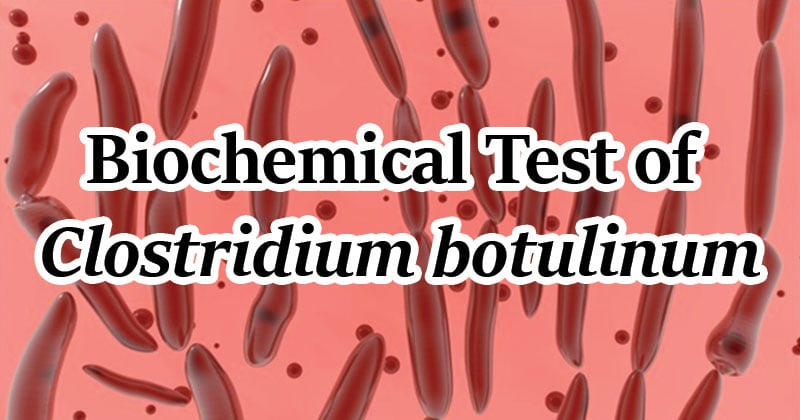Interesting Science Videos
(Type A and proteolytic strains of types B and F)

| Basic Characteristics | Properties (Clostridium botulinum) |
| Ammonia Production | Positive (+ve) |
| 20% Bile | Negative (-ve) |
| Capsule | Negative (-ve) |
| Catalase | Negative (-ve) |
| Flagella | Peritrichous |
| Gelatin Hydrolysis | Positive (+ve) |
| Gram Staining | Gram-positive |
| H2S | Positive (+ve) |
| Hemolysis | Positive (+ve). β-hemolytic |
| Indole | Negative (-ve) |
| Milk Digestion | Mostly Positive (+ve) |
| Meat Digestion | Mostly Positive (+ve) |
| Motility | Mostly Positive (+ve) |
| 6.5% NaCl | Negative (-ve) |
| Oxidase | Negative (-ve) |
| Shape | Straight to slightly curved rods, 0.6–1.4 × 3.0–20.2 μm. |
| Spore | Positive (+ve) |
Fermentation of |
|
| Arabinose | Negative (-ve) |
| Cellobiose | Negative (-ve) |
| Fructose | Negative (-ve) |
| Galactose | Negative (-ve) |
| Glucose | Positive (+ve) |
| Glycogen | Negative (-ve) |
| Inulin | Negative (-ve) |
| Lactose | Negative (-ve) |
| Maltose | Negative (-ve) |
| Mannitol | Negative (-ve) |
| Mannose | Negative (-ve) |
| Melibiose | Negative (-ve) |
| Raffinose | Negative (-ve) |
| Rhamnose | Negative (-ve) |
| Ribose | Negative (-ve) |
| Salicin | Negative (-ve) |
| Sorbitol | Negative (-ve) |
| Starch | Negative (-ve) |
| Sucrose | Negative (-ve) |
| Trehalose | Negative (-ve) |
| Xylose | Negative (-ve) |
Amino Acid Utilization |
|
| Arginine | Positive (+ve) |
| Glycine | Positive (+ve) |
| Phenylalanine | Positive (+ve) |
| Proline | Positive (+ve) |
| Serine | Positive (+ve) |
| Tyrosine | Positive (+ve) |
| Tryptophan | Positive (+ve) |
Enzymatic Reactions |
|
| Casein Hydrolysis | Positive (+ve) |
| Esculin Hydrolysis | Positive (+ve) |
| Lecithinase | Negative (-ve) |
| Lipase | Positive (+ve) |
| Superoxide dismutase | Positive (+ve) |
| Tryptophan Deaminase | Negative (-ve) |
References
- Bergey, D H, William B. Whitman, Vos P. De, George M. Garrity, and D Jones. Bergey’s Manual of Systematic Bacteriology: Vol. 3. New York: Springer, 2009. Print.
- https://www.vetbact.org/?artid=202
- https://www.fda.gov/food/foodscienceresearch/laboratorymethods/ucm070879.htm
- http://www.tgw1916.net/Clostridium/botulinum.html
- https://www.who.int/csr/delibepidemics/clostridiumbotulism.pdf
